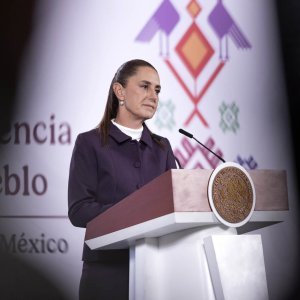Single-Company Management Boosts Project Efficiency

STORY INLINE POST
Q: How is AECOM innovating in project management and how are its clients benefiting from this?
A: Clients require a single contact that understands the project’s needs and that can single-handedly address those needs. It is risky to have several companies develop processes and introduce distinct technologies without coordination. AECOM’s Integrated Delivery Strategy (IDS) allows us to manage a project with a unified guarantee and a client-supplier strategy. We can manage every stage of a project, from conception to operation throughout the project’s life. This includes planning, design, engineering, construction and operation.
Q: What are the challenges of implementing this strategy in Mexico, where several companies are usually involved in the management of large projects?
A: Clients need to understand the advantages in terms of technology, efficiency and quality of having a single company manage the entire process. Implementing AECOM’s IDS does not imply that other companies will not take part in the project, but that a single management methodology is established and that suppliers from various sectors are more efficiently integrated into each step of a project’s development.
Q: What factors are the most troubling for foreign companies that want to develop infrastructure projects in Mexico?
A: Planning, sustainability, innovation and ethics. First, infrastructure projects in Mexico are not properly planned. All the necessary conditions and factors are not addressed in the best possible way. Second, project sustainability must go beyond addressing how environmentally friendly projects are. The economic, political and social elements of sustainability must also be considered. Social impact studies must be as important as environmental impact or financial feasibility because neighboring communities are always severely affected by infrastructure projects. The third factor is innovation. Mexican companies do not invest enough in their innovation departments, especially in implementing information technologies like BIM or Lean construction. Mexico continues to plan and execute projects as it has done for 40 years. Finally, ethics and transparency weigh on the ability of foreign and national companies to jointly work on large infrastructure projects in Mexico.
Q: What can be done by the government to address these challenges?
A: The National Council on Infrastructure (CNI) is an initiative developed by CMIC. Its purpose is to provide a roundtable opportunity for the private and public sectors to discuss the planning of complex projects. It was designed to guarantee that the government is not the only one to conceive and define the priorities for an infrastructure project by having the private sector – represented by chambers of commerce and associations — present its ideas. The government could take advantage of similar roundtables by listening to scholars and businessmen to address projects with more than political priorities and budget in mind.
Similar councils or committees where private companies, government dependencies and academic institutions can take part would be ideal. If they existed, large infrastructure projects would have to be revised by a committee integrated by members of all three groups and each aspect of the project would be thoroughly analyzed. The participation of the government through a public organism is important so that the social and political aspects of infrastructure projects are not ignored by the private sector. This is critical because public infrastructure projects are oriented toward creating a social benefit. This interaction between sectors has provided satisfactory results in other countries. In the UK, for instance, the private sector has come up with innovative concepts within public tenders – the compulsory use of BIM is a good example. Today, tender packages are delivered in a BIM format instead of a blueprint format.























